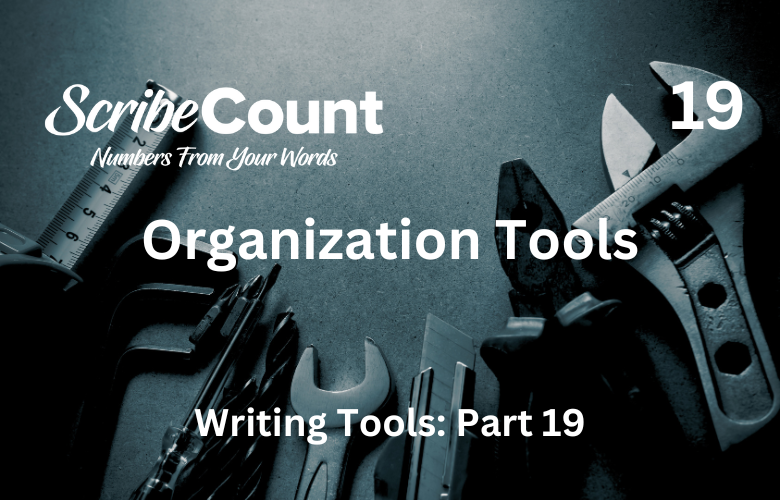Top Five Organization Tools for Independent Authors: A Comparative Guide
Independent authors often juggle writing, planning, publishing, and marketing their own books. Having the right tools to organize their workflow is crucial to staying productive and on track. While there are many tools available, five have become particularly popular with indie writers: Todoist, Writer's Companion, Trello, Bibisco, and Milanote. Each has strengths and weaknesses depending on an author's workflow, genre, and publishing goals. This article explores these tools in-depth, offering background information, feature highlights, pricing, and a comparison to help you decide which might be best for your writing journey.
Todoist
Todoist was launched in 2007 by Amir Salihefendić through his company Doist. Originally created as a simple to-do list manager, Todoist has grown into a powerful task management application used by millions across various industries. It is known for its clean interface and cross-platform synchronization.
Capabilities and Features
Todoist helps writers manage deadlines, create recurring tasks, organize projects (like book series), and track progress through productivity charts. It supports natural language scheduling, labels, filters, and integrations with tools like Google Calendar and Zapier. Writers can organize tasks by chapters, revisions, or marketing deadlines.
Cost and Discounts
Todoist offers a free plan with basic functionality. The Pro plan is $4/month billed annually ($48/year), or $5/month billed monthly. Occasionally, Doist offers discounts for students, educators, and nonprofits.
Most Popular Features
-
Natural language task input
-
Kanban board-style views for project organization
-
Productivity karma and streak tracking
-
Sub-task hierarchies and project templates
-
Integration with calendars and automation tools
Pros
-
Simple interface that’s easy to learn
-
Works across all devices (iOS, Android, desktop, browser)
-
Good for managing timelines and deadlines
-
Great for productivity-minded writers
Cons
-
Not writing-specific; lacks novel development tools
-
Limited visual project mapping unless used with boards
-
Not ideal for detailed character or plot tracking
Writer’s Companion
Writer’s Companion is a mobile-only app developed by Caleb Treeze, designed specifically for novelists and story creators. While relatively new compared to other tools, it is tailored directly toward fiction writing needs.
Capabilities and Features
This app provides features for organizing characters, plots, world-building elements, and timelines. It allows users to plan stories in great detail and structure their books using an intuitive interface. Everything is stored locally, which appeals to writers wanting a distraction-free, mobile-native tool.
Cost and Discounts
Writer’s Companion is free to download with optional in-app purchases. The full version is a one-time purchase of approximately $4.99, depending on the platform.
Most Popular Features
-
Character builder with profile templates
-
Timeline creator for tracking story events
-
Chapter organization
-
World-building pages for locations, species, governments, and more
Pros
-
Designed specifically for fiction authors
-
One-time low-cost purchase
-
No distractions from emails or browser notifications
-
Easy to use, especially for beginners
Cons
-
Mobile-only, which may limit some workflows
-
Lacks collaboration or export features
-
No cloud sync or backup unless used with third-party tools
Trello
Trello was launched in 2011 by Fog Creek Software (now Glitch) and acquired by Atlassian in 2017. Originally built as a simple Kanban-style task board, Trello has evolved into a flexible project management system.
Capabilities and Features
Trello uses boards, lists, and cards to represent tasks and projects. For authors, each board can represent a book, series, or publishing workflow. Cards can represent chapters, characters, plot arcs, or even marketing tasks. Trello supports attachments, comments, deadlines, and labels. It also offers "Power-Ups" to integrate with tools like Google Drive, Evernote, or Slack.
Cost and Discounts
Trello’s free plan includes unlimited cards and boards, but limits Power-Ups. The Standard plan is $5/user/month. Premium ($10/user/month) unlocks advanced views like calendars and timelines.
Most Popular Features
-
Drag-and-drop card management
-
Customizable boards for any workflow
-
Integration with automation tools
-
Collaboration features for co-authors or editors
Pros
-
Highly visual and flexible
-
Great for collaboration and workflow organization
-
Works well on both desktop and mobile
-
Can be tailored for fiction or non-fiction
Cons
-
Can become cluttered if poorly managed
-
No dedicated writing or word processing tools
-
Requires discipline to build your own system
Bibisco
Bibisco was developed by Italian software engineer Andrea Feccomandi. Unlike other tools, it is open-source and created specifically for novel writers. It aims to guide writers through building deep stories with structure and clarity.
Capabilities and Features
Bibisco includes detailed modules for character development, locations, narrative strands, scenes, and chapters. Its strength lies in helping authors build meaningful characters, track motivations, and structure narratives. It offers statistics on writing progress and scene balance.
Cost and Discounts
Bibisco has a free version and a “Supporters Edition” available for a one-time donation starting at €20 (around $22 USD). This version unlocks additional features like character interviews and timeline tracking.
Most Popular Features
-
Detailed character development modules
-
Scene and chapter breakdowns
-
Thematic analysis and narrative strand tracking
-
Desktop software with no distractions
Pros
-
Built specifically for novel structure and planning
-
Ideal for outlining, character tracking, and narrative flow
-
Open-source with no recurring fees
-
Runs offline for distraction-free writing
Cons
-
Lacks cloud sync or mobile versions
-
Interface feels outdated
-
Not ideal for task management or collaborative work
Milanote
Milanote was founded in Melbourne, Australia, and officially launched in 2017. It caters to creatives and is known for its visual layout system, which blends note-taking, mind-mapping, and Kanban functionality.
Capabilities and Features
Milanote is a visual workspace where users can create mood boards, story maps, outlines, and notes. Authors often use it to lay out visual representations of their plot, world-building, and characters. Boards are flexible, allowing images, text, links, and diagrams to coexist on a digital corkboard.
Cost and Discounts
Free accounts allow up to 100 notes, images, or links. The Pro version costs $12.50/month or $9.99/month billed annually. Occasional discounts are available for students and teams.
Most Popular Features
-
Visual boards with drag-and-drop functionality
-
Ability to mix media (text, image, links)
-
Collaboration tools for teams
-
Templates for storyboarding, character arcs, and mood boards
Pros
-
Great for visual thinkers and creatives
-
Supports multimedia elements
-
Real-time collaboration
-
Encourages creative brainstorming
Cons
-
Free version is limited
-
Expensive compared to other tools
-
Not built for actual writing (no manuscript tools)
Comparison Chart
| Tool | Best For | Platform | Price Range | Writing Focused | Cloud Sync | Mobile Access | Collaboration |
|---|---|---|---|---|---|---|---|
| Todoist | Task & deadline tracking | All devices | Free to $5/month | No | Yes | Yes | Yes |
| Writer's Companion | Plot/character planning | Mobile only | Free to $4.99 | Yes | No | Yes | No |
| Trello | Workflow & collaboration | All devices | Free to $10/month | No | Yes | Yes | Yes |
| Bibisco | Deep character & plot dev | Desktop only | Free or €20+ | Yes | No | No | No |
| Milanote | Visual planners, creatives | Web/Desktop | Free to $12.50/month | Somewhat | Yes | Yes (limited) | Yes |
Conclusion
Each of these five tools offers unique advantages depending on how you write and what you need to organize. If your focus is pure productivity and task management, Todoist is highly effective. Writers who prefer to outline on the go may benefit most from Writer’s Companion. Trello is a great balance between flexibility and collaboration, while Bibisco excels in story architecture. Milanote shines for authors who plan visually and enjoy working with mixed media.
There is no one-size-fits-all answer, and authors may find that combining two or more of these tools gives them the best results. For instance, using Bibisco for story planning and Trello for tracking deadlines and publishing milestones could provide both structure and flexibility.
These five are among the top tools, but they are not the only options. Tools like Notion, Scrivener, and Campfire Blaze also offer compelling features for serious writers. Ultimately, the best tool is the one that fits seamlessly into your process and encourages you to write more—and write better.

